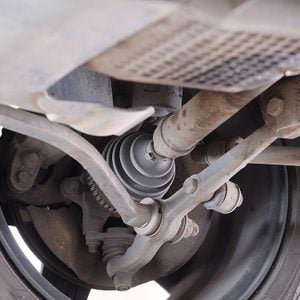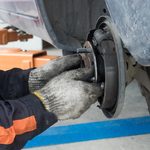Sea Foam: What It Is and Why You Should Use It for Your Engine
Sea Foam has been around for over 70 years—here's why it's one of the most trusted treatments for all engines.

What is sea foam?
Over time, the internal parts of your engine get clogged up with all kinds of nasty stuff. Inside the crankcase, where the oil lives, varnish and tar build up on the surfaces of pistons, rings, and lifters, as well as in the oil galleries that supply oil to all the components. This lowers the engine’s ability to cool and lubricate itself, reducing the efficiency, performance, and life of the engine. (Find out more ways you’re shortening the life of your car.)
The same build up occurs inside the fuel system as well, clogging the injectors or carburetor jets, gumming up the intake valves and the top of the pistons too. If the valves don’t move freely, your engine’s breathing is then greatly hampered. Carbon deposits on pistons and valves can lead to hot spots, which cause detonations, and then lowers your engine’s performance. The trick is: how do you clean? Virtually every engine, from two-stroke lawnmowers to big rig diesels face the same problem.
Sea Foam has been around for over 70 years, and it’s one of the most trusted treatments for all engines. While the company makes a range of excellent products, the main one is Sea Foam Motor Treatment. Sea Foam is specially formulated to safely and slowly re-liquify gum, sludge, varnish and carbon deposits from the hard parts in your engine so they can be flushed out of the system.
Sea Foam helps lubricate the moving parts, particularly in the fuel system. Ethanol additives dry out the seals and leave a varnish that makes it harder for oil to lubricate the parts. Removing this varnish brings the engine back into top working order. Inside the fuel tank, Sea Foam absorbs water, allowing it to be burned up in the combustion chamber without issue.
How to use sea foam
Sea Foam Motor Treatment can be used in three ways: in the crankcase, in the fuel tank, and in the diesel fuel filter. For cleaning the top end, use Sea Foam Spray as directed.
In the crankcase
- When added to the oil, Sea Foam will clean up sludge, quiet noisy lifters, and remove oil varnish. Since a can treats 15 litres of oil, it provides two treatments for most vehicles. The best method is to add the treatment between 800 and 1600 kilometres before the next oil change, and then add the rest after you have changed the oil. That way, the first treatment will get the big amounts of varnish and sludge out, and the second will keep things clean.
- Pop the cap off the oil filler neck. You can add Sea Foam before or after an oil change.
- Pour up to one ounce of Sea Foam per quart of oil already in the engine. We used about half of the bottle.
In the fuel
- A single can treats up to 60.6 litres of fuel. This will remove deposits from the fuel pump, injectors or carb jets, control the moisture level, and stabilize the fuel. In diesel engines, it will serve as a de-icing agent since it has anti-gel properties.
Top end
- To clean carbon deposits from air intake systems, intake valves and combustion chambers inside the engine, including GDI engines, Sea Foam recommends using their Sea Foam Spray Top Engine cleaner and lube (Part # SS-14). Sea Foam Spray is the same great Sea Foam product, only in aerosol spray instead of liquid form.
- Sea Foam Spray is used by inserting the included application hose and patented “HOOK TOOL” into the air intake, just in front of the throttle plates, in the throttle body. Then start the engine and let it warm up to operating temperature. Increase idle speed up to 2,000RPM and spray the contents of the container into the engine.
- Shut the engine off and allow it to “Hot Soak” for 15 minutes. After the Hot Soak period restart the engine and road test the vehicle aggressively until the exhaust is clean (a road test normally means driving for 8 to 16 kilometres). Easy-to-follow directions are also available right on the Sea Foam Spray container.
Treatments like these may seem complicated, but with a little bit of prep work, you can do it yourself and restore your vehicle’s power and performance. If you have any concerns, stop by your local NAPA Auto Parts Store or NAPA AUTOPRO Service Centre.
Next, find out which rust proofing option is right for you.






